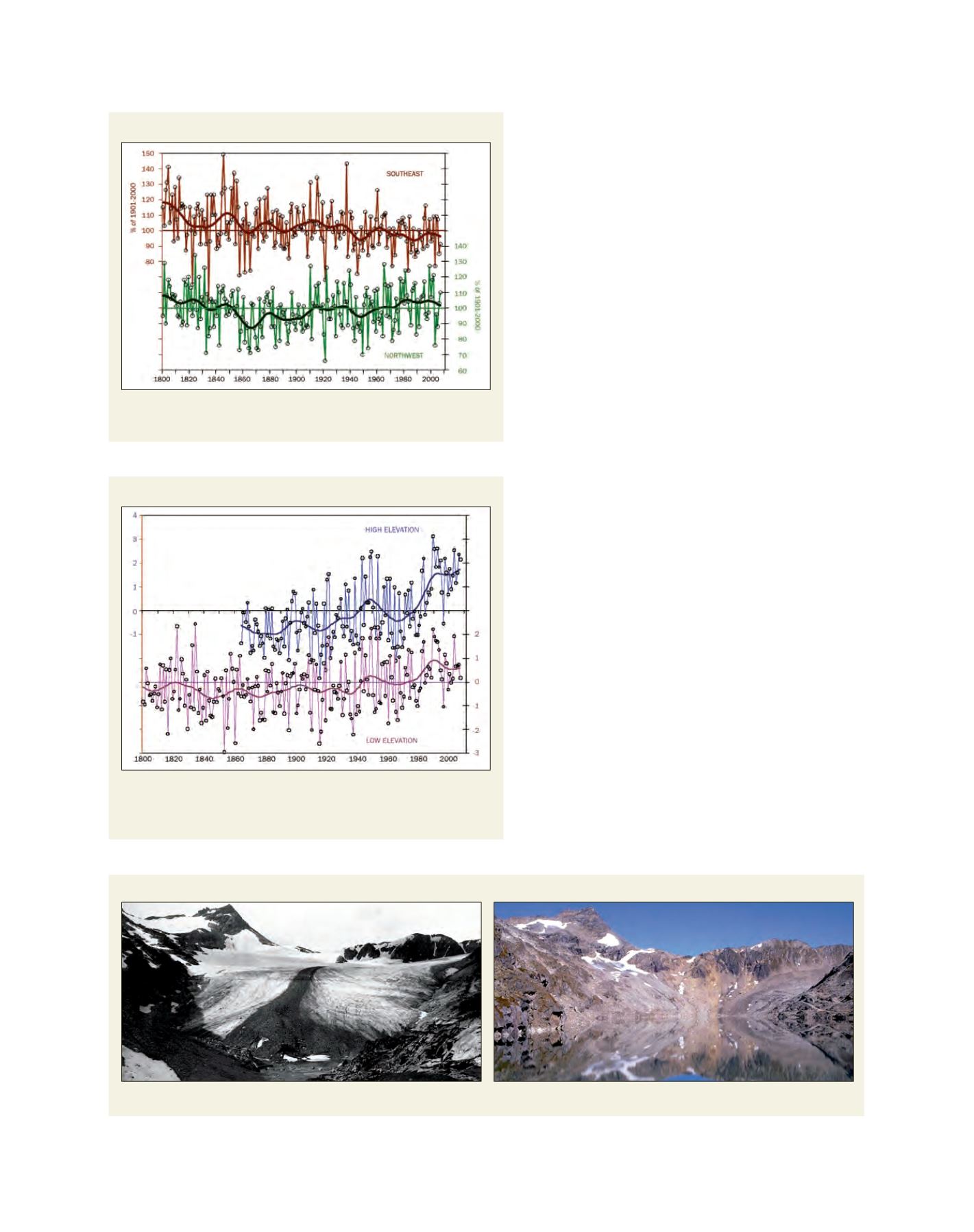

[
] 181
O
bserving
, P
redicting
and
P
rojecting
C
limate
C
onditions
This last example in particular is intended to illustrate
that high quality climate data is an indispensable precondi-
tion not only for sophisticated scientific research, but also
for practical interdisciplinary application, as well as for
political discussion in the general public.
Reaction of glaciers to climate change in the
Austrian Alps
Glaciers are among the natural phenomena on Earth
with the highest sensitivity to the climate. Thus a
small change signal in the climate – especially in
global radiation, air temperature or precipitation –
can result in a distinct change of glacier mass and
even, after a time delay, an advance or retreat of the
glacier front. This high sensitivity makes glaciers espe-
cially valuable when:
• Documenting climate impact and climate change
• Deriving climate proxy information from
observations of glacier changes.
Additionally, ice cores from glaciers and ice sheets are
among the most important climate proxy sources.
Beside Scandinavia the European Alps are among
those regions worldwide with the longest series of
documented glacier changes. In particular, documents
of glacier changes include paintings and photographs,
front position measurements, volume changes (from
interpretation of maps, aerial photographs and satel-
lite data) and measurements of mass balance and
glacier surface flow. Outside of these observations
the mass balance of a glacier is the key measure, as it
constitutes a direct and timely signal of climate pertur-
bation. Observations of mass balance date back only
to about the 1950s in the Alps and about the 1940s in
Scandinavia. Contrary to mass balance observations,
systematic front position measurements of Alpine
glaciers go back as far as the late 19th century, but
are limited by aggregated information including both
climate and glacier dynamics. The advent of regular
front position observation prompted an international
glacier monitoring effort, which is today coordinated
by the World Glacier Monitoring Service.
4
Sub-regional annual precipitation
Two sub-regional annual precipitation series for the northwestern and
southeastern CRSs of the GAR
Source:
www.zamg.ac.at/histalpSub-regional annual air pressure
Two sub-regional annual air pressure series for the mean low elevation series
below 600 metres at sea level and for the high elevation summit sites above
2,000 metres at sea level
Source:
www.zamg.ac.at/histalpThe retreat of the Wurtenkees glacier
The retreat of the Wurtenkees glacier (eastern Austrian Alps) evident in photographs taken in 1896 and 1999
Image: A.E. Forster (left); R. Böhm (right)
















